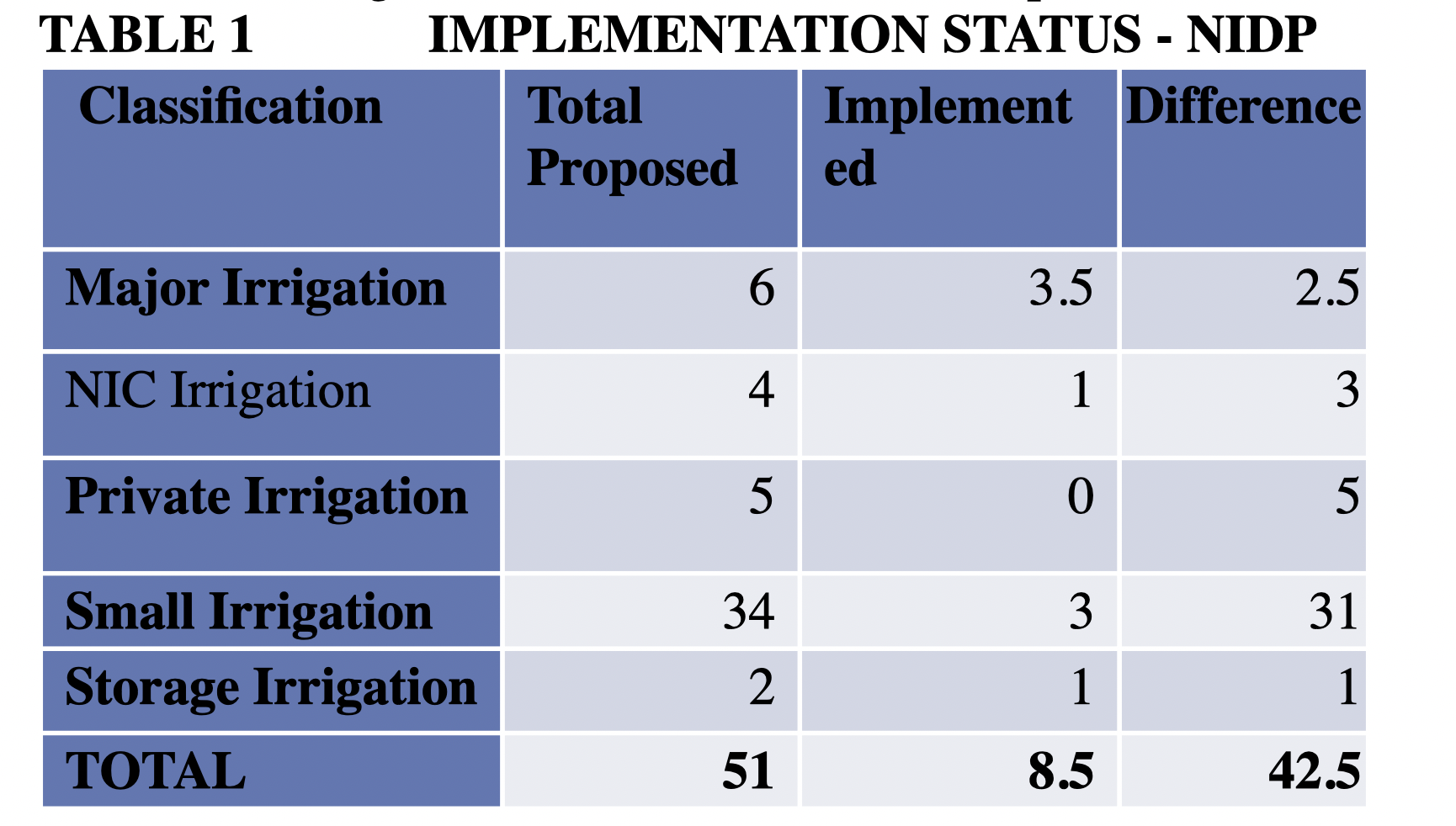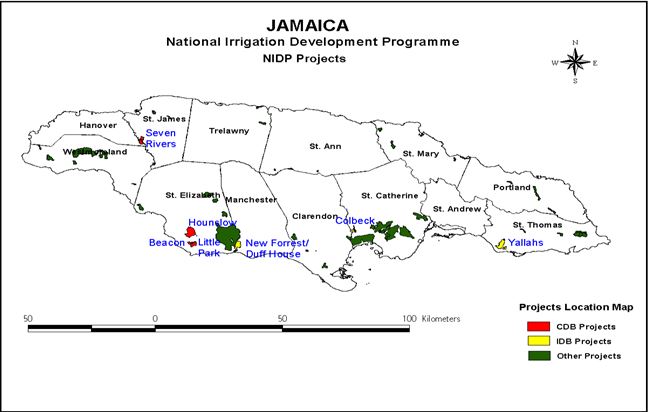The National Irrigation Development Plan (Master Plan) was commissioned by the Government of Jamaica in 1998 to identify irrigation projects island-wide and to prioritize areas for development. The Inter-American Development Bank (IDB) and the Government of Jamaica jointly financed the study. The NIC was the implementing agency and the Planning Institute of Jamaica (PIOJ) the executing agency for the study.
The contents of the Master Plan were as follows:
- The proposed implementation strategy
- The state of agriculture production with irrigation development
- Recommendations on irrigation policy and strategies for successfully implementing the NIDP
- Proposals for institutional strengthening
- Generic environmental assessment of the irrigation sector
- Identification of projects and ranking them in order of priority
Outcome and Impact of the Project
Over a 17-year period from 1998 to 2015, the study identified and reviewed over 125 irrigation projects with 83 projects evaluated and 51 proposed for implementation.
To date, 8.5 irrigation schemes have been completed as shown in Table 1 below.
The implementation process was obstructed by a number of issues including the lengthy land acquisition and procurement procedures. Despite these challenges, some of the work commissioned under the NIDP is of relevance today.
In the Major Irrigation category, a feasibility study conducted on the Essex Valley area of St. Elizabeth was the basis of the application for project development funding provided by the UK-CIF. The scheduled completion date is June 2023 and the project will bring irrigation water to approximately 700 hectares, mainly in the Comma Pen area and also Lititz, Nain, Bull Savannah and Junction.
Additionally, the Yallahs West area has been approved for development starting in the 2020/21 financial year and represents Phase II of the Yallahs Major Irrigation Scheme under the NIDP. The successful implementation of Phase I of the Yallahs East project in 2012, outfitted approximately 240 hectares with irrigation for 300 farmers.
Due to the passage of time and the many changes that have occurred since the NIDP study, the Master Plan needs updating to include factors such as:
- The impact of climate change
- Renewable energy initiatives
- Changes in land use patterns
- Use of treated effluent for irrigation
- Advances in irrigation techniques and agricultural production systems
- Incorporation of agricultural product marketing standards including GLOBAL G.A.P
Arising from this update, the expected Master Plan outputs should include:
- Alignment of the plan with Vision 2030
- Revised list of priority projects for investment
- Recommendations for irrigation policy updates – capacity-building, revision of irrigation water demand island-wide, farmer engagement initiatives, agricultural marketing linkages



